Who does not like a good discount? Everyone except for businesses who don’t know how to manage their discounting strategies properly.
The method of reducing prices to gain more buyers is as old as time and has been tested and implemented in a thousand different ways. So does this mean it is a foolproof strategy and a win-win for both businesses and customers in any scenario? Definitely not. When sellers treat discount pricing as a long-term remedy that can be implemented time and time again, it means nothing but trouble — and we are here to make sure that does not happen.
In this blog post, we will talk about discount pricing, dive into the most popular discounting strategies, and offer some tips on how to handle it all well.
Content:
What is discount pricing used for?
Discount pricing is a set of techniques and practices where a seller reduces the price of their products for a limited time, aiming to gain more traffic, product turnover, and conversions.
While the execution of this strategy is approximately the same in almost every case, the reasons behind it usually vary. Business owners and marketers can consider cutting down their prices to reward loyal or new customers, sell through excess produce piling up in warehouses, re-engage inactive or dissatisfied clients, draw attention to a product launch, etc.
At baseline, if deployed correctly, discount pricing benefits both sides of the bargain — customers haul a desired product for a smaller price, and merchants boost their sales rates thanks to a significant client influx. Read on to delve deeper into the upsides of this strategy, as well as its downsides.
Pros and cons of discount pricing
A well-developed price discount strategy will increase a company’s profit despite the reduced product prices. However, this is not the only benefit there is to it.
Here are the advantages you can get by implementing a discount strategy:
- luring in new clients by providing an incentive to make the first purchase;
- re-igniting the interest of shoppers who have been idle for a while;
- strengthening customers’ satisfaction with your brand by rewarding their loyalty;
- making a customer feel special and cared for by making an exclusive one-time offer;
- selling out your surplus inventory instead of letting it gather dust in store backrooms;
- making it up to an unhappy customer for a misstep or an issue on your end;
- staying on top of the competition by using discounting strategies for customer retention;
- reducing the number of incomplete checkouts by offering a discount on an abandoned order;
- having control over how many people use your offer by introducing discount codes.
Overall, discount pricing can be a magnificent customer acquisition strategy if it’s your product quality that buyers value. Still, sales often attract bargain hunters who are unlikely to become loyal customers — you will only see them during discount campaigns, and that is not the customer behavior you want to nurture.
Here are other negative outcomes a poorly-planned price discount strategy can cause:
- frequent discount campaigns can get shoppers used to only buying your products during sales;
- crudely developed discount campaigns can drag you into a price war;
- long-lasting discounts can make customers question your product quality, which damages your reputation;
- discount pricing can shrink your profit margins in the long run.
The upshot here is that although discount pricing does offer more benefits than shortcomings, the latter can by far outweigh the advantages you reap. The good news is that it is perfectly avoidable. To knock it out of the park with discounts, you need a strategy.
Discounting strategies to implement
There is a time and place for every discount campaign, and you can’t just take 50% off all clients’ orders on a whim. You might want to latch onto the idea of offering discounts to different audience segments at specific times — let’s run over some discounting strategies to see how it’s done.
First-time visit discount strategy
No visitor is ready to make a purchase when they see your website for the first time, and you should not expect them to be. Instead, you can tempt them with a 10% or 15% discount for their first order to push them in the right direction and get their email address along the way. Take a look at one of our discount pricing examples to get a grip on how it can be implemented:
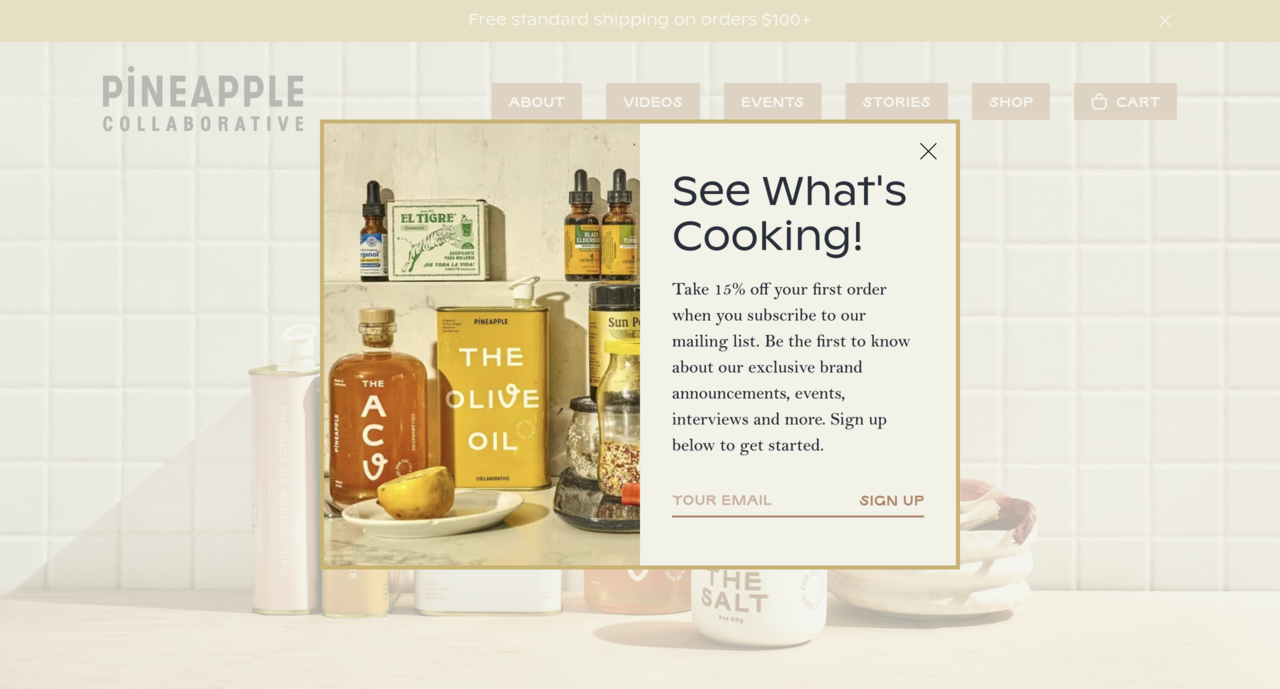
A subtle but attractive pop-up is what works best for this price discount strategy. Use a smart pop-up builder to spot your first-time visitors, wait a few moments, and then display a pop-up with a discount offer — this way, you are respectful to users’ experience on your website and get your point across without being intrusive.
Early bird discount strategy
Everyone loves an early bird… Well, business owners sure do. Whenever you launch a new product or service, people who are first in line to try them as soon as possible are your most loyal customers. It’s an excellent idea to reward and motivate people to be on the lookout for your new products and offer early bird discounts to grow a customer base before your launch goes live.
Another way to leverage this price discount strategy if you work in the hospitality industry is to offer discounts to clients who book hotel rooms or restaurant tables much further in advance. Have a peek at how EuroParks does this:
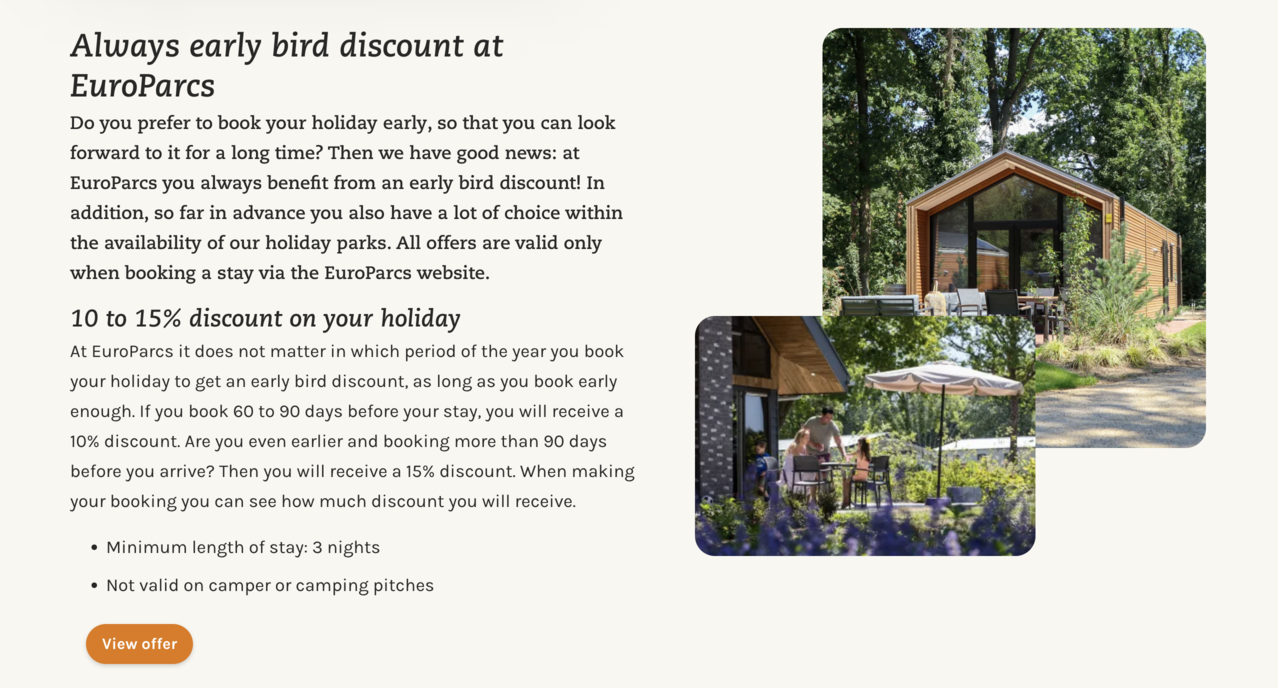
Announce your discount pricing by posting about it on your product landing page and adding a form to gather their contact info and keep in touch. Alternatively, you can send an email to your existing clients and present an opportunity to be the first to try your new product for a reduced price.
Loyalty reward discount strategy
Customer retention is a lot fiercer of a battle than customer acquisition. Once you build an audience of devoted customers, you want to hold on to them as long as you can, and rewarding their loyalty is the way to go here.
For instance, kikki.K thanks its clients for being loyal by offering to take 25% off their orders.
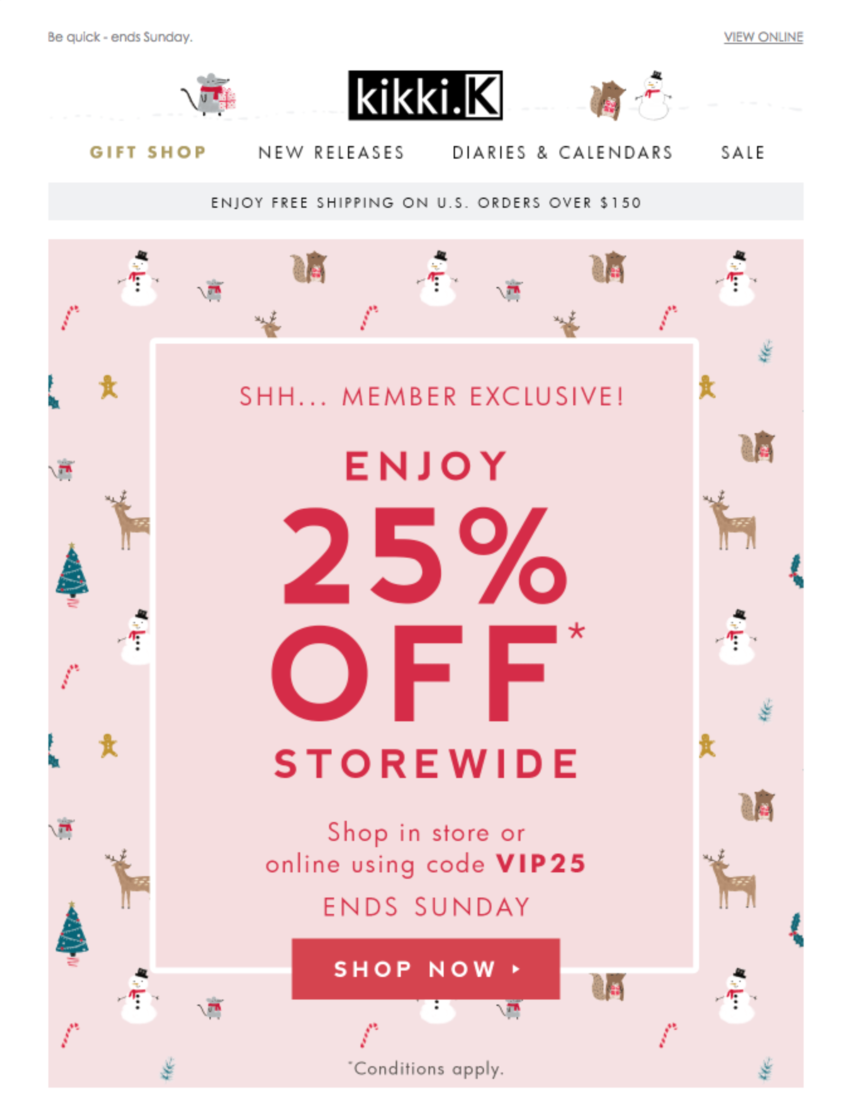
Here, the brand deploys a loyalty reward price discount strategy by emailing its buyers about an exclusive offer. You can also go down this road since email campaigns are a tried and true approach. Another way to provide a discount to a segment of loyal clients is to send them a chatbot message — this will not require you to spend time on the visuals, as all you need is text.
Referral discount strategy
Sadly enough, negative human emotions are often more robust and incentivizing than positive ones. Case in point: it’s insanely easy to get smacked with a devastating customer review when they don’t like your products. However, getting satisfied clients to recommend your brand to friends and family calls for some heavy lifting. Still, nothing is beyond repair. A well-laid-out referral price discount strategy can nudge consumers to spread the word about your product and bring in new clients.
Here is how Surreal introduces its referral program in an email to customers:
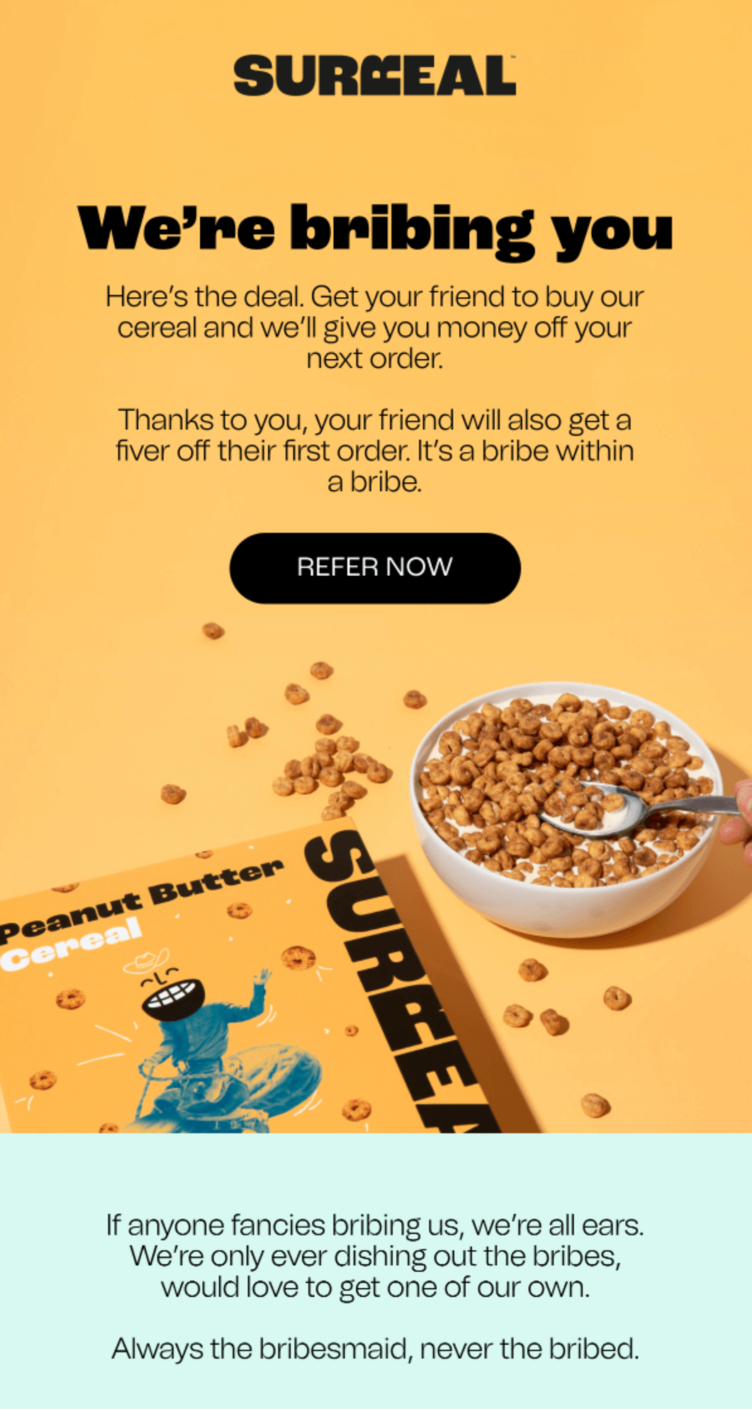
This is one of the discount pricing examples you should follow and ensure a discount for both your customer and their friend to keep all sides of the bargain satisfied. Just like with the previous strategy, you can also send an email or chatbot message to shine a spotlight on your referral discount campaign.
Re-engagement discount strategy
You cannot think of every client who has not purchased anything for quite some time as a lost cause. With the right strategy and discount pricing examples, you can bring back even those who are about to consign your brand to oblivion.
Take this as an example: Mubi, a subscription-based streaming service, gives a discount to re-ignite customers’ interest.
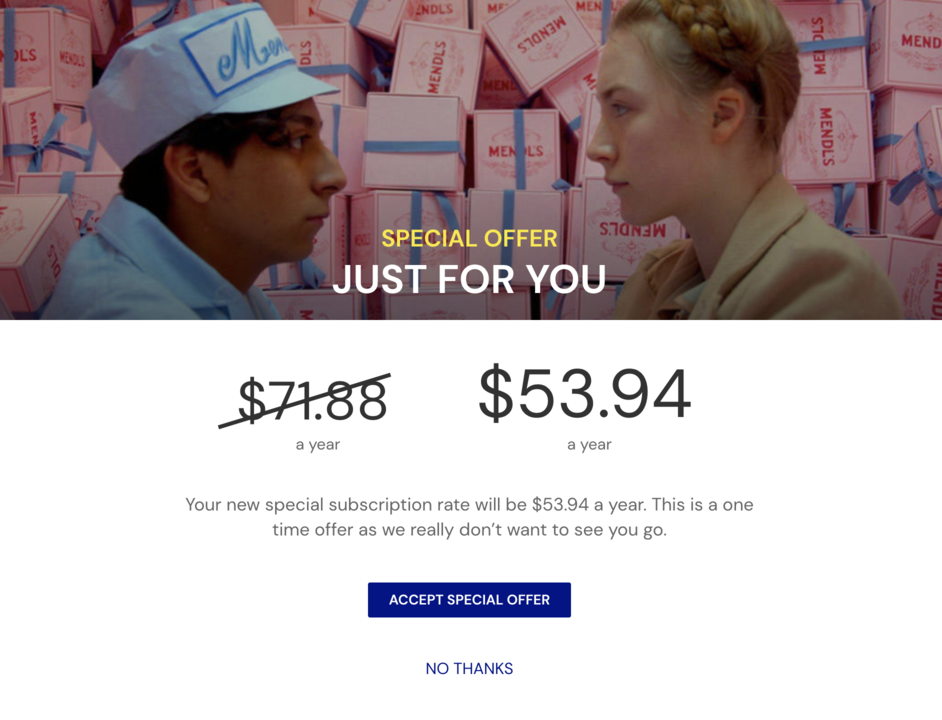
Mubi shows this page with a discount pricing offer to customers who are about to cancel their yearly subscription. This approach can work with clients who like your product or service but think that you charge a bit too much for them. Other than that, it can prove useful with clients who have been inactive for a long time.
Holiday and seasonal discount strategy
What is so great about seasonal and holiday discounts is that they are expected. Shoppers know that companies arrange discounts during specific times of the year and are already on the lookout. With this in mind, consider adopting a seasonal price discount strategy to keep your sales rate afloat during the off-season. Here is how Friendly’s introduces their seasonal sale in an email:
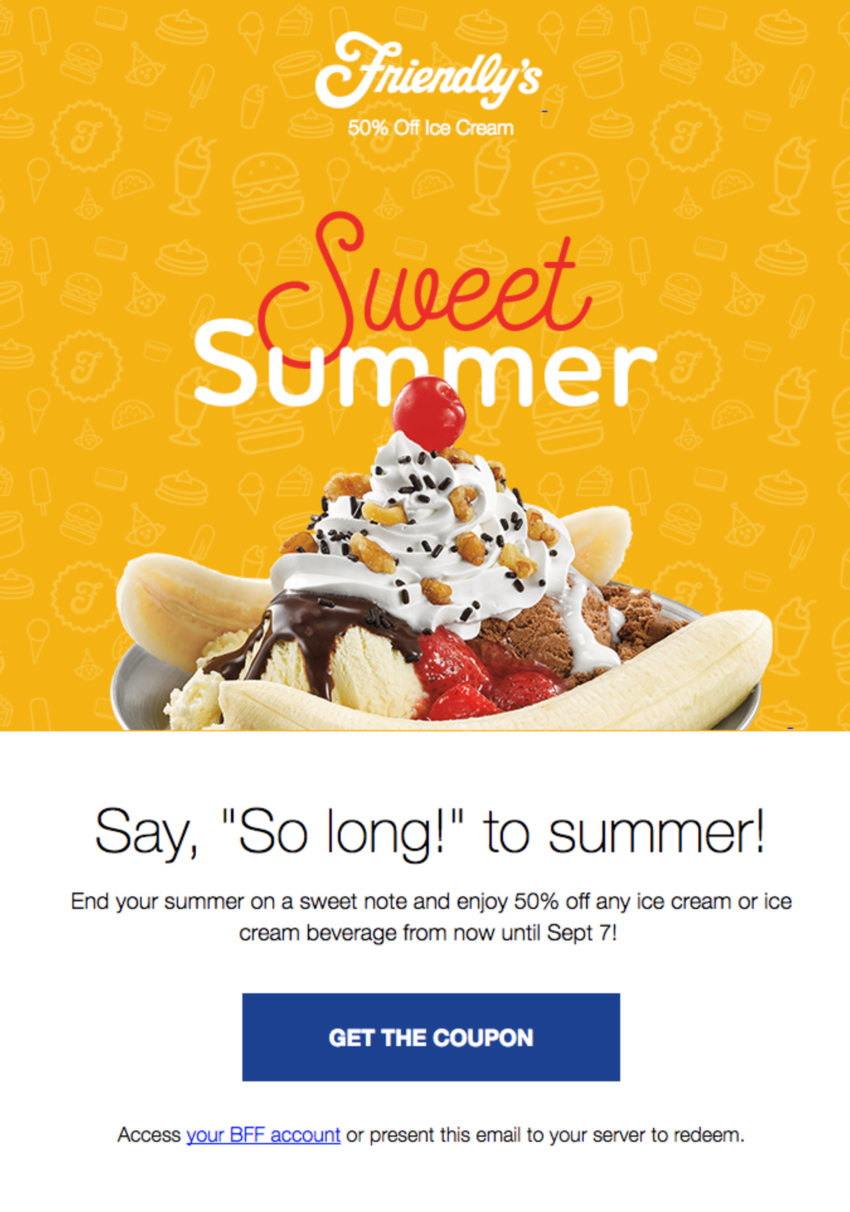
Holiday discount pricing can be your window to the world of old customers, last-minute shoppers, and anyone who still has a fair share of doubts about your brand. Ensure time-limited holiday discounts for your shoppers to supercharge your sales during this period, just like Fitbit does:
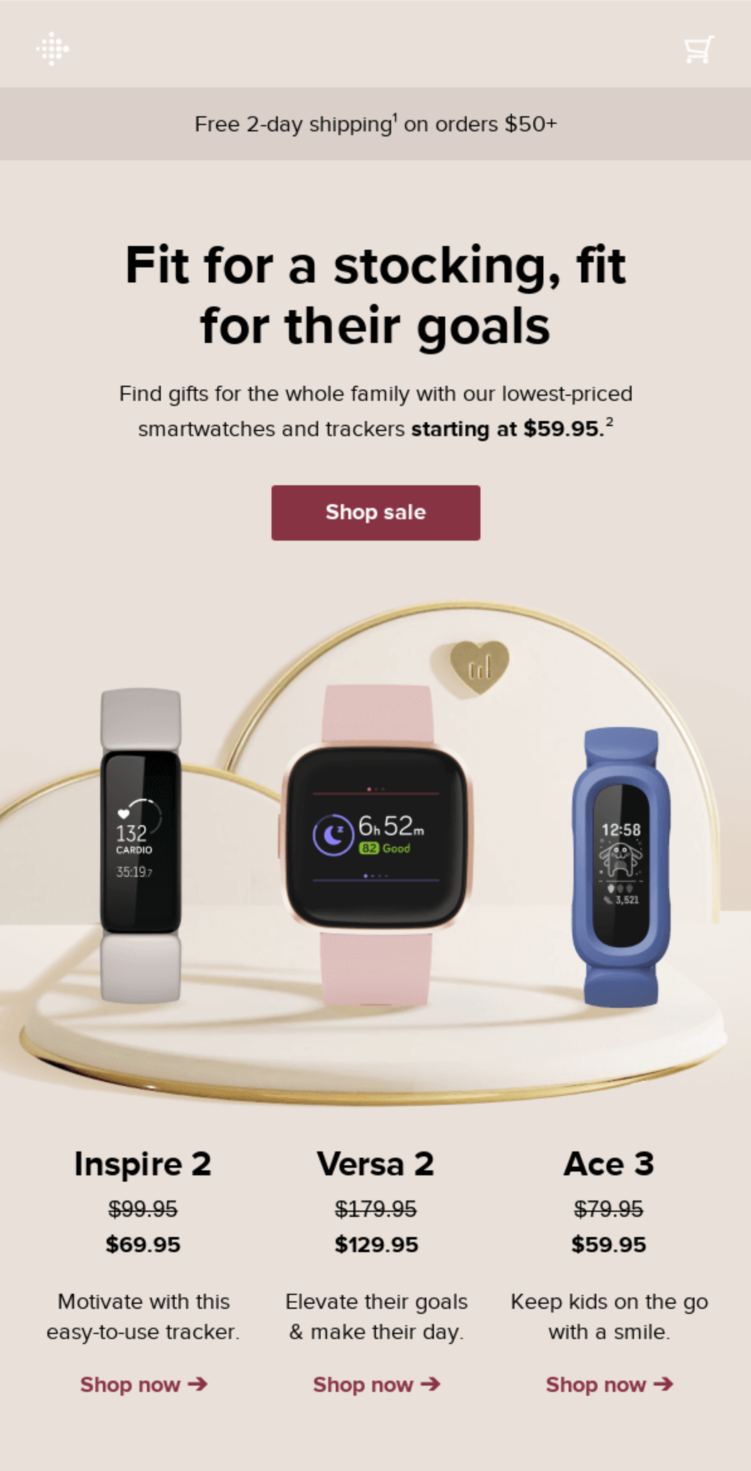
Follow our discount pricing examples and present your discounted products as potential gifts, creating a holiday gift guide or checklist. You can announce a sale like this in an email, chatbot campaign, web push notification, pop-up, or on a landing page — almost every approach works here.
Abandoned cart discount strategy
Cart abandonment normally has plenty of underlying reasons, including website errors, card issues, and a complicated checkout process. However, according to Baymard Institute, the most common one is high extra costs like shipping or fees — 48% of customers do not complete their purchases because of this. In this environment, you can go the other way and offer a discount to such shoppers.
Have a look at an email offering an abandoned cart discount to get the hang of how this price discount strategy can be deployed:
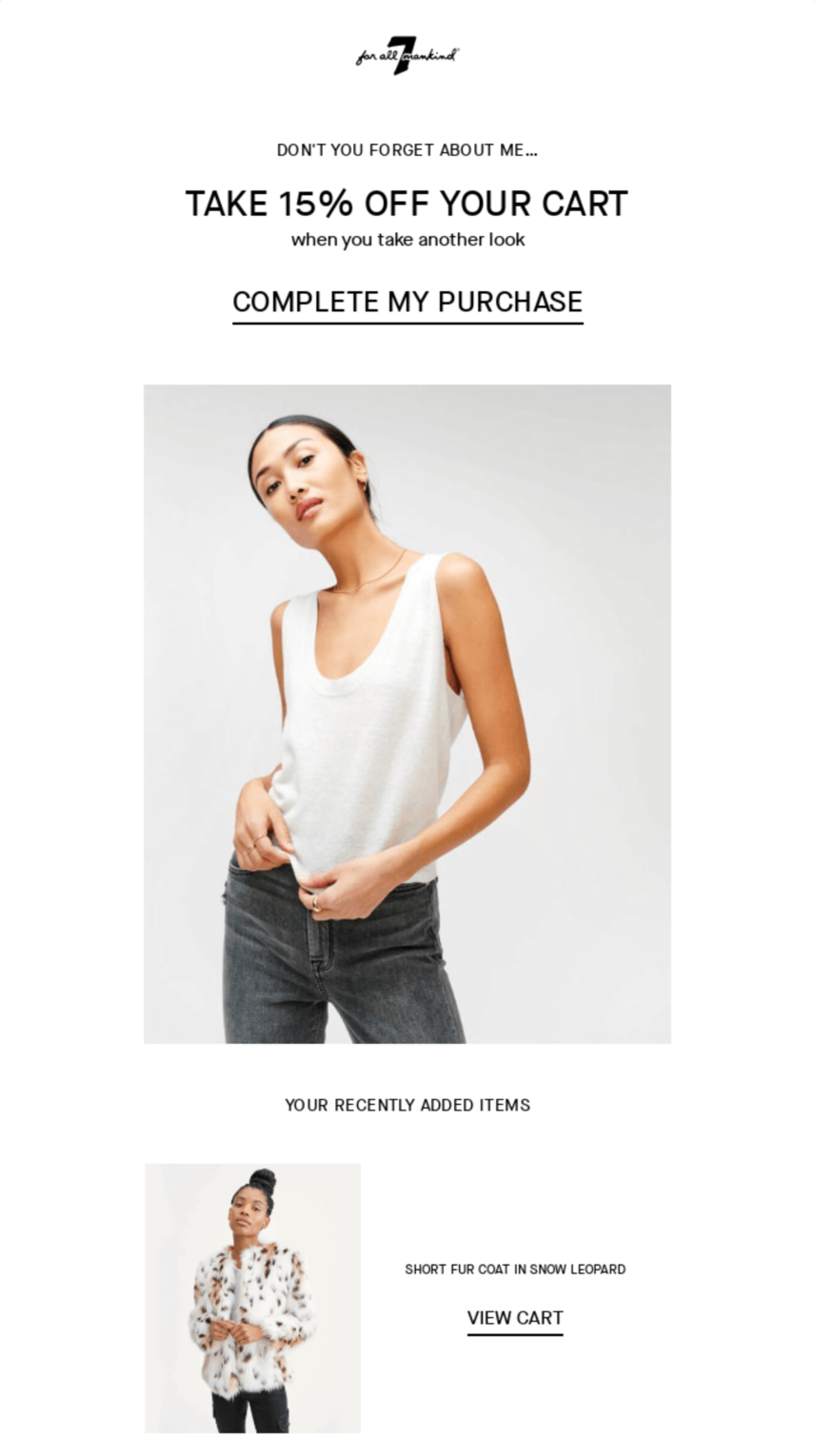
Although the traditional way of implementing this price discount strategy is to send an email, it is not the only way. Exit-intent pop-ups are an excellent way to promptly spot a buyer who is about to close the tab and abandon their order and grant them a discount right away.
Quantity discount strategy
One of the most popular discounting strategies among retail businesses is the buy-X-get-X or BOGO approach. Instead of offering a discount, you can provide shoppers with an additional product for free. This technique can be your perfect match if you have some excess inventory lying around or need to dwindle your per-unit costs. Glance at how Blume brought this strategy to life:
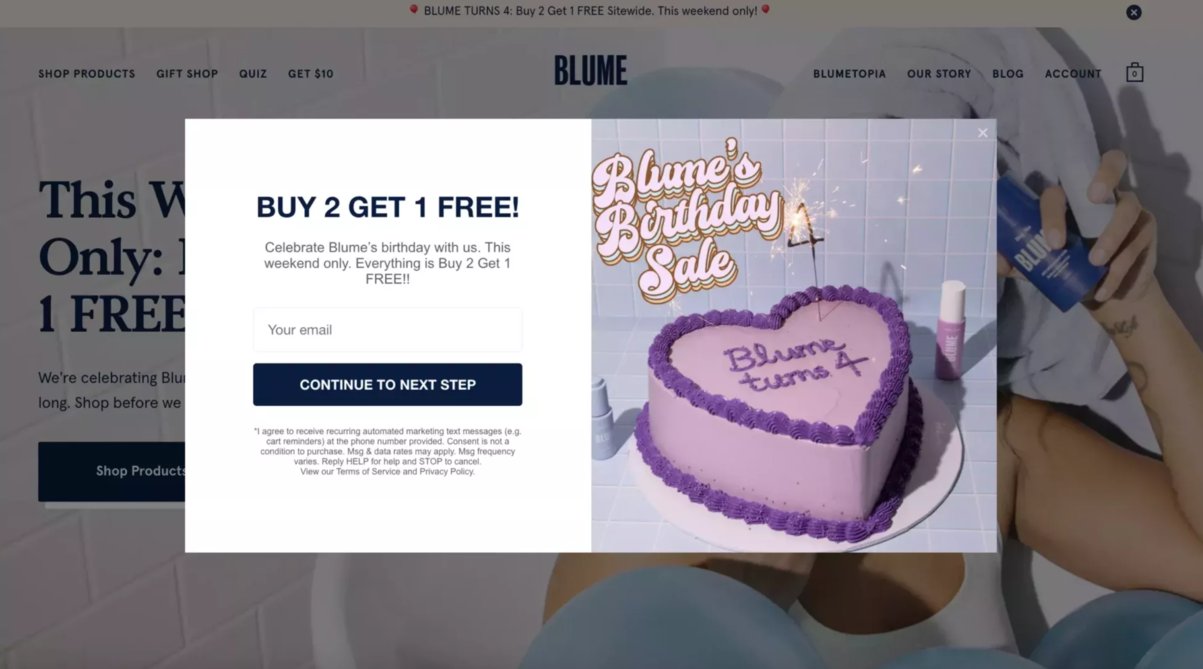
With discounting strategies like this, you can craft pretty much any campaign to promote your offer, including emails, chatbot messages, pop-ups, landing pages, and more.
Tips on discount pricing
Whatever you should or should not do with your discounts will depend on the specific strategy you choose. Namely, the means of promoting your discount campaign, its duration, and the final price after your discount are predetermined by your business situation and objectives.
Still, here are a few tips you want to follow regardless of the discounting strategies you use:
- do not treat discount pricing as a long-term solution — it is a helpful but makeshift remedy;
- add value to your products instead of simply reducing their price;
- make your discount campaigns time-limited or use them sparingly to avoid damaging your sales;
- pick and market a price discount strategy based on your specific needs and clients you want to target;
- do not introduce discounts frequently, as it leads consumers to believe that they will only buy your products during sales;
- segment your audience to be able to provide personalized discounts to specific groups of customers;
- test your campaigns to understand what discount duration, presentation, and type works best for you;
- use sales pipeline automation tools to keep track of your discount campaigns and their statistics.
And that’s all we have to teach you for now, which means that you are almost ready to develop your own discount strategy to prop up your sales!
Develop your own price discount strategy
A complex and well-thought-out discount campaign requires a strategy and smart approach. In their turn, all the planning and monitoring require a versatile marketing automation tool — and that’s our jam! We developed a platform that allows you to pull it off with your discount pricing and gain as many new customers as you can!
With SendPulse, you can build your price discount strategy using automated email, chatbot, and web push campaigns, landing pages, and smart pop-ups and manage your sales process in our CRM system. Sounds neat, right? Oh, and did we mention that you can try it all for free? Don’t shy away and start creating a discount strategy that will scale your business right away!







